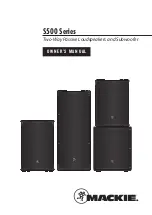
70
Options and programming methods
The
key (next to the data transfer buttons) opens a window which will allow you the
define the event. This window is divided into two sections:
•
Equation
•
Timers and counter details
EQUATION
The logical expression of the event includes various parameters, which may have a
“real” value (either “1” or “active” - as in the case of a verified event) or a “false” value
(either “0” or “not active” - as in the case of a restored event):
TEMPORIZERS
A temporizer is a logical expression element (it may have an “active” or “non active”
value). It is characterized by an interval, therefore, you must specify an interval (in
seconds) for each temporizer you wish to include.
You can select up to four “Start events” (i.e. control panel events which trigger the
temporizer) and up to four “Reset events” (i.e. control panel events which interrupt the
temporizer). You can specify the “Edge” for each of the eight events, that is, the status
passage of the selected event (“Activation”, “Reset” or “Both”).
The last two options allow you to choose when the temporizer will be “active”:
•
Temporizer active on Start event
. The temporizer will become “active” on start,
that is, when a start event occurs, and will remain “active” for the sat time. The
temporizer will become “non active” when the set time expires or when a reset event
occurs.
•
Temporizer active with delay
. The temporizer will remain “non active” on start,
that is, when a start event occurs and will remain “non active” for the specified time.
The temporizer will become “active” when the specified time expires.
Note
A temporizer with the “Temporizer active with delay” option enabled will remain “active” until a
reset event makes it “non active” again.
COUNTERS
A counter is a logical expression element. It is characterized by an increasing value
(“Count”). The counter will have a “non active” value until it reaches the set value,
which will take the counter to the “active” value.
You can select up to four “Start events” (i.e. control panel events which increase the
counter value) and up to four “Reset events” (i.e. control panel events which annul the
counter). You can specify the “Edge” for each of the eight events, that is, the status
passage of the selected event (“Activation”, “Reset” or “Both”).
It is necessary to define an “Autoreset” time that will zero the count when, between two
successive increases, a superior time elapses. If you do not desire an “Autoreset” time,
you must set the time at “65535” (already set at default), in order to ensure that the
count never expires.
Note
You should not set an “Autoreset” value of less than 5 seconds.
Once the event programming process is complete and the event is sent to the control
panel, the event programming values will be checked for errors.
Table 49:
Programmable event
A
Section for the compilation of the logical
expression.
B
Section for the definition of the timers and
counters.
C
Selection field and button for the inclusion
of the verified control-panel event to be
included in the equation.
The restoral of the event is included using
the event followed by the “NOT” operator.
D
Selection field and button for the inclusion
of the timer.
E
Selection field and button for the inclusion
of the counter.
F
Selection field and button for the inclusion
of the button.
G
Keys for the inclusion of the logical opera-
tors in the expression.
H
Keys for the deletion of the entire expres-
sion or the last element of the expression.
I
Field for the visualization of the expres-
sion.
J
Key for the commutation of the visualiza-
tion mode of the equation (parameters/
descriptions of parameters).
K
Field for the addition of eventual notes..
E
C
F
D
A
B
J
K
I
H
G
















































